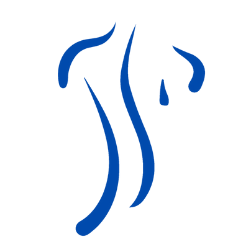Can Physio Help Sciatica?
Can physio help sciatica? It’s a question many people ask, and the answer is yes! Physiotherapy can reduce symptoms of sciatica, as well as prevent a recurrence or flare-up. In this blog post, I will explore how physio helps treat and relieve sciatica.

I am one of the physiotherapists at Dublin Physio & Chiropractic – and we specialize in treating back pain and sciatica. If you have any questions about physiotherapy for your back pain and sciatica, please don’t hesitate to contact us at 01 254 4800. Or check out our blogs on low-back pain and sciatica for some more information on the conditions, and ways of effectively treating them for good.
Relief From Sciatica
Physio helps reduce that nagging, persistent sciatic pain that shoots down the leg, and is often accompanied by lower back pain and weakness in the leg and foot.
Physio reduces these symptoms with a combination of hands-on therapies, like muscle release techniques and massage therapy to desensitize the painful area so you can move more freely with less pain, and exercise therapy.

Additionally, the unique thing about Dublin Physio & Chiropractic is who also use spinal decompression, laser therapy, and intrinsic core strengthening to combat these symptoms and restore normal function.
Physio Goals And Sciatica
Setting timely and individual goals is so important in the rehabilitation of sciatica. Whether you are an elite athlete or a weekend warrior, our physios will set realistic goals with you to ensure that your sciatica symptoms are completely resolved.
The main goal for physio treatment of sciatica is relief from pain and restoring function. And then it’s up to you to continue the physio exercises in between sessions so that your sciatica doesn’t come back or flare up again – build resilience.
What Is Sciatica And How Does It Affect The Body?
The sciatic nerve is the longest and widest single nerve in your body, and it’s about an inch wide. It starts from a bundle of nerves at the low back, which branches down into each leg through openings between each of your vertebrae (spinal segments), and runs into the foot. It controls muscle function of the hamstrings, buttocks, and lower leg muscles.
Sciatica can be caused by pressure or irritation to this nerve, which may occur in the low back (lumbar spine). Some of the most common causes include disc herniation, a degenerated disc on one side pressing on the sciatic nerve root as it exits from the spinal canal, degenerative disc disease which causes bulging of the nucleus pulposus into the spinal canal, or nerve compression at the level of the butt muscles (glutes), i.e piriformis syndrome.
If you have sciatica symptoms that are causing pain and affecting your ability to function – physio can help! If you’re not sure if physio is right for you or if you are unsure if sciatica is what you are experiencing, check out our blog for more information on sciatica.
How Can Physiotherapy And Prevention Of Future Episodes?
Physiotherapy reduces sciatica symptoms by using a combination of hands-on therapies such as massage therapy, manual physio stretching techniques, and specific exercises.
As well as reducing pain and improving your function with physio – our physios at Dublin Physio & Chiropractic also utilize spinal decompression to treat the root cause (hemorrhage and edema) of sciatica.
Additionally, physio for your back pain can help you prevent a future flare-up or recurrence by building strength in the intrinsic core muscles that control movement around the spine – these are often weak in people with lower back issues like sciatica.
An Exercise To Help Extreme Sciatic Pain
Sciatica can be so frustrating and intense, hugely distributing sleep and daily activities. You just need relief and fast, because nothing seems to work.
An exercise you can try at home, that I often prescribe to my clients in the clinic is known as sciatica ‘nerve flossing’, and I generally recommend doing it lying on your back.
Lie on your back and bring the leg with the shooting pain up to 90 degrees, so your hip and knee are at 90 degrees. Then straighten your knee a little and bring your toes towards until you feel a stretch in the back of your leg, release the stretch by pushing your toes away or bending your knee slightly, then again straighten your knee a little and bring your toes towards you to bring on a slight stretch, and then again release the stretch, and repeat 10-15 times, and then relax and you should find your shooting pain has decreased.
Talk To A Physiotherapist About Sciatica
If you are experiencing a lot of lower back pain and sciatica, and have experienced a few episodes of this pain, maybe it is time to see a professional.
At Dublin Physio & Chiropractic are team are experts in treating lower back pain and sciatica. We will perform a thorough assessment and formulate a unique and individually tailored treatment plan, based on your history, goals, and movement behavior.
We are located in Dun Laoghaire, Dublin, Ireland. We offer free parking to all our clients.
Call us at 01 254 4800 or book a physio session online.




